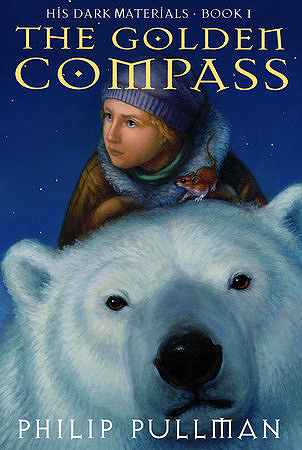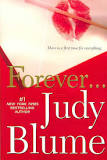
As a child, and still now, I was fascinated by worlds of fantasy. I read whatever book I could get my hands on that told stories of other worlds, some like my own, some vastly different. But, when I brought home Phillip Pullman’s The Golden Compass from my middle school’s library my mother immediately told me to take it back.
“That book is evil,” she had said, “The man who wrote it is an atheist.”
Being an innocent and naïve child, I did as she said unquestioningly. If my mom thought it was bad, it had to be. Right? When we were given this assignment I immediately sprang at the chance to grab this book and read it for the first time. Many of my friends had experienced the same thing with their parents when they brought the book home, and after I looked into it more, apparently many, many other parents did too.
The Golden Compass, or The Northern Lights as it is titled in other countries, was first published in 1995 to great critical acclaim. It went relatively unchallenged by the gatekeepers for more than ten year until the film adaptation was released in 2007. That is when everything surrounding this magical story was placed under the prying microscope of parents. There are many things present in The Golden Compass that warranted other books to be banned and challenged at other times: violence (a bear gets its lower jaw ripped off, and many children and adults die, sometimes is fantastically brutal ways), the presence of magic and witches, and a rebellious and often foul mouthed protagonist (even though it is never explicitly written, Lyra is described as swearing and cursing quite a bit). What parents chose to hone in on though was Pullman’s treatment of religion (with an occasional spatter of issues with drug use alcohol). The Golden Compass was pulled from the shelves of many schools—most of which were Catholic schools—in both the US and Canada for the book’s “anti-Christian message” (Marshall University) in 2008 and 2009. The books all ended up being returned to their respective libraries, but now holding a sticker that said, “representations of the Church are purely fictional and not reflective of the real Roman Catholic Church or the Gospel of Jesus Christ.”
In the same year Pullman’s His Dark Materials series, in which The Golden Compass is apart of, ranked second on the United State’s banned books list (Pilkington) jumping up from its fourth spot that it held in 2007 (Flood). In 2007 The Golden Compass received “420 formally submitted complaints to libraries and schools over ‘inappropriate content and subject matter’” (Flood). The author himself, stated that he felt “glee” when he discovered his book was being challenged. He also stated that he saw this rise in dissent over his novel due to religion was “the worst reason of the lot” (Flood). He was also quoted as saying that, “Religion grants its adherents malign, intoxicating and morally corrosive sensations. Destroying intellectual freedom is always evil, but only religion makes doing evil feel quite so good” (Flood).
This disdain for religion, though, doesn’t entirely permeate the novel. There are many people in the story who are Christian, or at least they profess to “God” and discuss matters of faith as if they follow a view of religion similar to Christianity, but these characters are not apart of an actual church or attend any semblance of organized religion. They hold a personal faith in God, not one dictated to them by an overseeing priest. The real villains of the story though operate under the power of “The Church,” and they are the ones to commit some of the most evil of deeds within the story. It can be assumed that Pullman does not have an outright problem with faith itself, but of the manipulative machinery of an organized religion. Making The Golden Compass into one of just a bashing of religion really takes away from the power behind the story, though.
The protagonist, a young girl by the name of Lyra, a stubborn and feisty child, is driven by a deep moral sense and urge to do what is right. She, and every other human in the novel, is accompanied by her dæmon (pronounced like the word “demon”) Pantalaimon. A dæmon is the physical manifestation of a person’s soul that takes the form of an animal (a literal spirit animal). It is notable that the dæmon of a child is able to shift between different animal forms until puberty, when the creature settles on a single form that most reflects the person they belong to. Lyra grows up as a ward of Jordan College in Oxford, blissfully unaware of the world around her until she spies on a conference of scholars and finds out about a mysterious substance called “Dust” and the presence of another world visible within the Northern lights, which is where this Dust seems to be originating from. Soon after Lyra discovers this she also finds out that children all over the world are disappearing from their homes, especially children of poor families and from the nomadic Gyptians (a play on Gypsies)—all in all, children who won’t be missed by anyone but their families. These child abductors are referred to as “Gobblers” by many people, due to the idea that they are taking the children and eating them, while in reality what they are doing is much more sinister than that. This ordeal strikes close to home though when Lyra’s friend is abducted by the Gobblers. Before she is able to do anything though she is granted into the care of a scholarly woman named Mrs. Coulter and granted an extremely rare tool by the master of Jordan college called an alethiometer (a truth reader) that she is told not to show to Mrs. Coulter, and informed that she would one day learn to read it.
It is soon revealed that Mrs. Coulter is a wicked, although charming woman, who works for The General Oblations board, also known as the Gobblers. This is a secret, yet church sanctioned, organization that is kidnapping children to study to understand the relation of Dust to human beings. It is discovered that Dust is completely absent in children until they reach adulthood and their dæmons become fixed. The Church believes that the presence of the dust is equivalent to the presence of Original Sin, so what better way to save children from sin then to separate them from the very essence of their souls, and what they believe to be the source of the sin—the fixation of the dæmon. Lyra discovers what Mrs. Coulter is doing and runs away and goes on a perilous and magnificent journey to the North to save her friend Roger and the other kidnapped children from the fate set before them. It is revealed along the way that Lyra is destined to save their world from destruction, but only if she does it unknowingly.
The story itself focuses highly on the power and cunning of children, exhibited strongly through Lyra. Children are often presented as vulnerable and dense throughout the novel, but Lyra is able to overcome all of that, leading as an example to the other children, and most likely to the young people reading the novel. At the same time though, Pullman does make it clear that sometimes children may be powerless to control some of the situations that they are in, but he shows that there is always a better way to look at it, or a cunning way of handling it through Lyra’s adventures and exploits. She is often shown coming up with things that many adults never would have thought of, and her determination is what drives the story forward. Lyra can be viewed as a picture of power to young readers who may aspire to be as brave and smart as her. Despite all that though, Lyra is often treated like a child and is subject to the will of the adults around her. These scenes almost serve as a reminder for her to stay in her place. She must ask permission to do certain things while in the company of adults, and she must obey their orders—at least until the finds a way out of doing it.
The nature of children though is most deeply explored through the concept of dæmons, though. They constantly shift into different animal forms depending on the situation that they and their person are in, or to reflect the mood that the child they are attached to feels. This ability to constantly change shape and form mirrors how children themselves are able to do this. Nothing about a child’s life or personality is set in stone. They are free to be whatever they want as they shape their personality, and sometimes that varies by day or even by hour. Nothing is definite about them, so why should their soul be contained in one shape? The idea of the dæmon settling into one shape as the child approached puberty though seems to harness the lingering idea that the children will be slipping more into a certain personality and appearance that they like best. They are starting to realize who they are, and therefore their dæmons also settle.
The idea of banning a story just because it disagrees with your religious views is pretty outrageous. Closing our minds to ideas and views of life that differ from our own can severely limit the experiences that one can have. Keeping children from reading books such as The Golden Compass deprives children of a truly magical and heart-touching experience. Thinking that a child can be so easily swayed from the way they were raised to another opinion just from reading it once in a book severely underestimates the morality and faith of children, which is what I think Pullman is trying to get to the heart of in his series.
Works Cited
Flood, Alison. “Pullman Defiant over US Protests against Northern Lights.” The Guardian. Guardian News and Media, 29 Sept. 2008. Web.
“Marshall University Libraries.” Marshall University. N.p., n.d. Web
Pilkington, Ed. “Children’s Writer Philip Pullman Ranked Second on US Banned Books List.” The Guardian. Guardian News and Media, 30 Sept. 2009. Web.
Pullman, Philip. The Golden Compass. New York: Alfred A. Knopf, 1996. Print.


